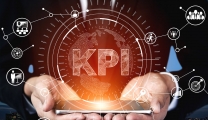Multi-channel retailing definition
What is Multichannel Retailing?
Multichannel retailing refers to the practice of using multiple channels to sell products or services to customers. These channels can include traditional brick-and-mortar stores, e-commerce websites, social media platforms, mobile apps, and more. The goal of multichannel retailing is to provide customers with a seamless shopping experience across all channels, allowing them to purchase products whenever and wherever they want.
What is a Multichannel Retailer?
A multichannel retailer is any business that sells products or services through multiple channels. This can include traditional brick-and-mortar stores, e-commerce websites, social media platforms, mobile apps, and more. Multichannel retailers aim to provide customers with a seamless shopping experience across all channels, allowing them to purchase products whenever and wherever they want.

Multi-channel retailing definition
Types of Multichannel Retailing
There are several types of multichannel retailing that businesses can use to reach their customers:
- Brick-and-Mortar Stores: This is the most traditional form of multichannel retailing, where businesses have physical storefronts that customers can visit and make purchases.
- E-commerce Websites: With the rise of the internet, e-commerce websites have become one of the most popular channels for multichannel retailing. Customers can shop online and have products delivered to their doorstep.
- Social Media Platforms: Many businesses now use social media platforms like Facebook, Instagram, and Twitter to sell products directly to customers. They can create shoppable posts and ads that allow customers to make purchases without leaving the platform.
- Mobile Apps: With the increasing use of smartphones, mobile apps have become another popular channel for multichannel retailing. Businesses can create custom apps that allow customers to shop on-the-go and receive personalized recommendations.
- Marketplaces: Third-party marketplaces like Amazon, eBay, and Etsy allow businesses to sell their products alongside other sellers. This can help increase visibility and reach new customers.

Multichannel in retail
Multi-channel Retailing Advantages and Disadvantages
Advantages of Multichannel Retailing
There are several advantages to using a multichannel retailing approach:
- Increased Reach: By selling through multiple channels, businesses can reach more customers and expand their audience.
- Improved Customer Experience: Multichannel retailing allows customers to choose how they want to shop, whether it's in-store, online, or through a mobile app. This provides them with a seamless shopping experience and can lead to increased customer satisfaction.
- Better Data Collection: With multichannel retailing, businesses can collect data from multiple sources, including online analytics, in-store purchases, and social media interactions. This can provide valuable insights into customer behavior and help businesses make better decisions.
- Diversification: Multichannel retailing allows businesses to diversify their revenue streams and reduce their reliance on any one channel.
Disadvantages of Multichannel Retailing
Despite its many advantages, multichannel retailing also has some potential disadvantages:
- Increased Complexity: Managing multiple channels can be complex and time-consuming, requiring businesses to invest in technology and personnel to ensure everything runs smoothly.
- Cannibalization: Selling through multiple channels can sometimes lead to cannibalization, where customers shift their purchases from one channel to another, rather than increasing overall sales.
- Brand Dilution: Maintaining a consistent brand image across multiple channels can be challenging, especially if different channels have different marketing strategies or target different audiences.
- Higher Costs: Multichannel retailing requires investments in technology, personnel, and inventory, which can increase costs for businesses.

Multi-channel retailing advantages and disadvantages
Multichannel Retailing Examples
There are many successful examples of multichannel retailing, including:
- Nike: Nike has a strong presence in both brick-and-mortar stores and e-commerce websites. They also have a mobile app that allows customers to shop on-the-go.
- Warby Parker: Warby Parker is an online eyewear retailer that has since expanded into physical storefronts. They also use social media platforms like Instagram and Pinterest to showcase their products.
- Best Buy: Best Buy has a well-established e-commerce website, but they also have physical stores where customers can try out products before making a purchase. They also offer curbside pickup and same-day delivery options.
- Sephora: Sephora is a beauty retailer that has embraced both e-commerce and brick-and-mortar stores. They also use social media platforms like Instagram and YouTube to provide tutorials and product demonstrations.












Replies to This Discussion